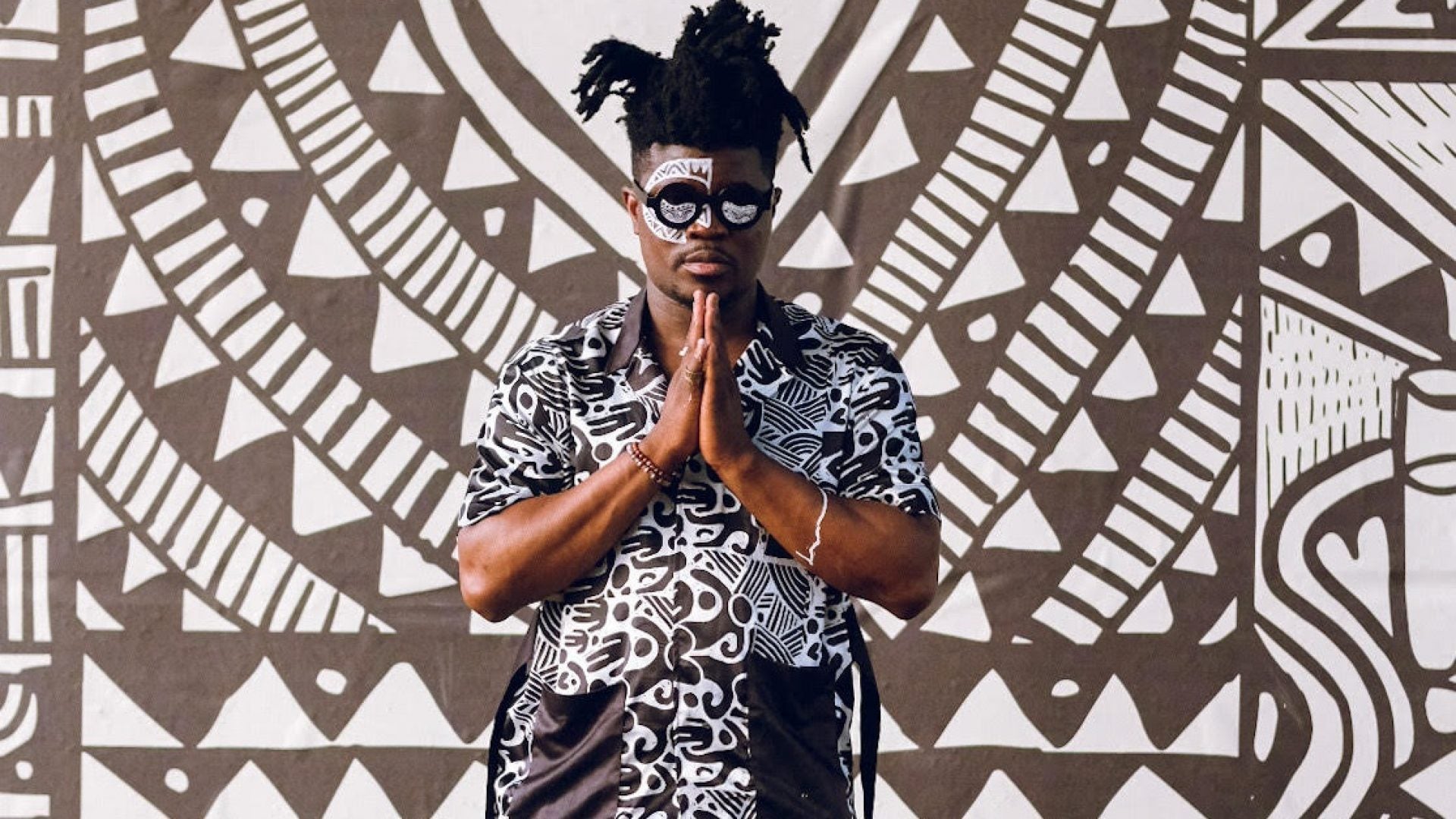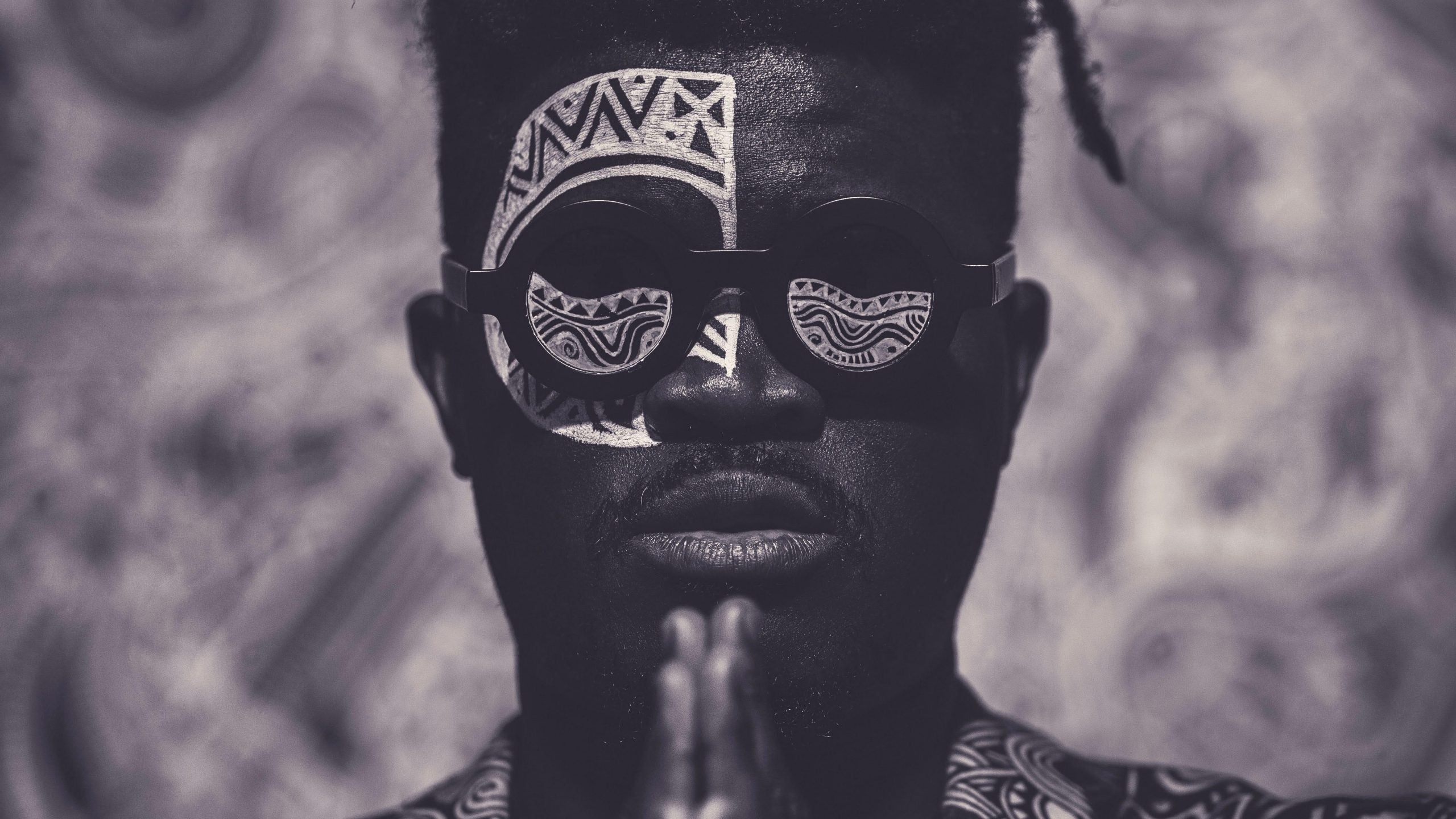
Laolu remembers his grandmother, who he refers to as Mama, with tattoos on her arms and legs. “As a child, I thought she was born with them, with beautiful black lines and detailed symbols,” Laolu told ESSENCE. His grandmother told him that her tattoos were symbols from Yoruba mythology. He continued, “I never knew how this was going to influence the artist that I am today.”
As a former human rights lawyer, the 38-year-old artist fought for justice and had a keen focus on sociopolitical causes. As he transitioned into his art career, he continued to express his passion for the protection of his people through this creative outlet. Stemmed from his frustration of seeing all of the injustices negatively impacting the Black community, he found a new outlet in painting.
“I see the world through a lens of justice and strive to bring a voice to the oppressed and disenfranchised through all of my work, so partnering with allies has helped amplify this message and use my talent to bring attention to greater issues,” Laolu said. “To me, all surfaces are a canvas. By placing my artwork on just about any and everything I can get my hands on, I believe I can leave a part of my art and Yoruba heritage wherever I go.”

Laolu’s art has been seen across many campaigns throughout the culture including Belvedere bottles and Beyoncé’s 2016 visual album “Lemonade,” which just hit its five-year anniversary. The artist revealed that Beyoncé wanted to pay homage to New Orleans for her Lemonade project, and his art was reminiscent of her creole origins.
“One day, I was just doing my regular work in Brooklyn, and I got an email that said, ‘Hi, I’m a big fan of your work. Would you like to paint for my music video? Signed, Beyoncé.’ Like, Beyoncé emailed me,” Laolu said in excited disbelief as he reminisced on the moment that the “Best Thing I Never Had” singer connected with him. “I was like, ‘What? How did she even know me?’ I thought this can’t be true. Of course, I thought it was a scam. The Nigerian in me was like, ‘Nah’.”
“When Lemonade dropped, everything just went from zero to 100 real fast,” he told ESSENCE. After Laolu’s work was featured by Queen Bey herself, his career began to skyrocket to new heights and he became the sought-after artist that he is today. He was featured in magazines, blogs and was even stopped in the street by newfound fans. “As artists, we work so hard all our lives for our art to be recognized, and for this, I feel blessed.”
Last year, Laolu was tapped to be the creative director for a campaign that would raise awareness for the African youth’s exposure to malaria. The artist himself has even contracted malaria a few times, so he was even more inclined to spread the message about the awareness of the disease. He tells ESSENCE that Malaria has taken many lives in Nigeria, and the Draw The Line Against Malaria campaign is a “worthy cause” to bring attention to the issue.
For the campaign and throughout his work, Laolu uses Afromysterics, which he defines as “the mystery of African thought pattern.” It heavily relies on what he calls “very sophisticated symbols.” Laolu said, “I call them hieroglyphs from Yoruba mythology.” Now Laolu is working on a new exhibition which will be premiering next month titled the “Ìyá Ni Wúrà” series, which is translated to “Mother is Gold.”

“I created the series as an homage to the Yorúbá culture and Ife arts, as well as to make a statement about the perception of women in Western society,” Laolu told ESSENCE about the inspiration and creative process behind his latest installation. “In Yorúbá culture, mothers are the essential building block of relationships, identities, and society. Mothers symbolize familial ties, unconditional love, and loyalty. At the moment of birth, two entities are born – a baby and a mother.”
The exhibition which premieres on Mother’s Day demonstrates a pregnant mother and her child in a “saintlike and glorified” manner. Laolu wanted to honor mothers, and women in general, and challenge the perception of a woman’s place in society through a Western hemispheric lens. He drew inspiration from pre-colonial Nigerian culture, where there was a domineering division between men and women.
“I get inspiration and my creative instincts from my Yoruba heritage and childhood memories of growing up in Nigeria and the beautiful tattoos on my grandmother’s skin. It’s all very personal to me and part of my identity as an African and as an activist,” Laolu said as he brought the conversation back full circle about his growth as a creative. “When I create my art, I am telling stories and starting conversations. I see everything as my canvas and a way to leave a piece of my art, heritage, and identity wherever I go.”




